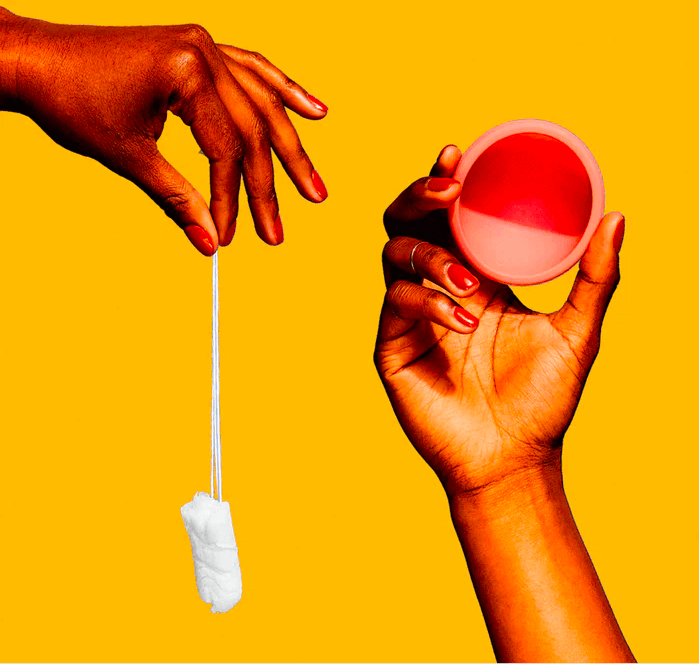Anovulation is when you go through an entire menstrual cycle (28 days on average) without releasing an egg for fertilization. Many significant factors can cause this anomaly.
- Pituitary gland dysfunction
- Premature ovarian insufficiency
- Low body weight
However, in most cases, the causes are minor (we’ll discuss them more later on) and can be treated or even reversed.
Note: Anovulation doesn’t happen very often but it does occur from time to time throughout your life. It may, for example, happen frequently during your first few years of menstruation—but it’s difficult to spot later on as it doesn’t always affect your period in ways you would expect.
Today we discuss anovulation—including more on what it is and how to spot it by identifying its most common symptoms.
Ovulation (That Can Lead To Anovulation) Is a Process Not an Event
To fully understand anovulation you’ll need to grasp what goes on within your body when you are ovulating. Ovulation begins when a mature egg is released into your fallopian tube and can last up to 24 hours.
You’ll have a six-day window for fertilization at this time (4 days before the egg is released and 2 days after). If you miss this window, your body will flush the unfertilized egg and your uterine lining so you can try again.
This ‘flushing’ is known as a menstrual period.
Fact: An average period lasts anywhere between 3 to 7 days and its appearance marks the first day of your new menstrual cycle.
The ideal conditions required for ovulation to occur are between days 10 and 18 of your menstrual cycle. Multiple hormones are responsible for making this process a success [1]. We break them down in this table.
Hormonal imbalances during this time result in anovulation (or no ovulation) — either because an egg was not released or the egg did not achieve maturity.
Once you’re within childbearing age (12 to 51) you can experience anovulation. In fact—1 in every 10 persons do so.
Anovulation is very common and can happen from time to time but chronic anovulation (no ovulation month to month for at least a year) can lead to infertility [2].
So, how do you spot this well-disguised phenomenon?
Common Signs and Symptoms of Anovulation
1 - Your Period Is Rarely on Time
Bleeding is usually a sign your menstrual cycle has begun [3]. However, a cycle means consistency. If your period does not start on time it may be because there was no egg, no ovulation, and therefore no prompt to begin a new cycle.
The length of time between periods may differ from one person to another but once you find out your cycle length, it should not drastically change from month to month. Apps such as clue can help you keep track of your monthly flow.
Irregular periods are an excellent way to spot anovulation. Why?
They allow you to identify abnormal uterine bleeding (AUB). If the length of your cycle is constantly changing by more than just a day or 2 (like a jump from 25 days to 35 and then back down to 28 then to 40), anovulation may be the cause.
The bleeding experienced as a result of anovulation is—more often than not—due to hormone changes, which is not the same as a menstrual period (uterine wall shedding).
Yes, you can bleed without having ovulated, which is what makes this particular phenomenon hard to spot. That begs the question: how do you know whether or not you’ve ovulated in a given month?
It’s all about the signs! [4]
- Base temperature increase—you run a little warm due to progesterone increase.
- Breast tenderness occurs right after ovulation due to hormone changes.
- Your cervix changes position right before ovulation (moves higher) so there’s more room in the vagina.
- Your libido tends to increase right before ovulation to induce fertilization.
Speaking of signs, the amount of blood you lose during your period can hint at anovulation.
2 - A Heavy Flow or Only Light Spotting
On average you should be losing anywhere between 30 to 45 millilitres of blood over the course of your period. This is the case whether it lasts 3, 5, or 7 days.
If you don’t get past 20 millilitres your bleeding is considered light (spotting) and may indicate that the shedding of your uterine wall is not the cause - if it were, there would likely be more bleeding.
The same can be said about heavy bleeding (blood loss that exceeds 80 millilitres), your uterine lining does not cause the release of that much blood, but low levels of progesterone can.
The rate at which you soak through or fill period products such as pads, tampons, and menstrual discs can help you spot abnormal blood loss.
However, when you use a menstrual disc it’s much easier to observe your flow. This can help you to better determine whether your flow is normal, light or leans more to the heavy side. It can also help you stay in the know if there are any sudden changes - something you can’t do with regular pads or tampons.
3 - Your Cervical Mucus Remains Thick and Minimal
The hormones that trigger ovulation also affect your vaginal discharge. Normal vaginal discharge is thick and mucus-like in consistency but minimal.
During ovulation, your volume of discharge increases significantly. This causes the consistency to be much thinner but still cloudy and sticky.
These changes are due to a rise in the hormone estrogen which creates conditions that are ideal for sperm to seek and find your travelling egg.
Remember, these hormone changes must take place for ovulation to occur. If the signs of these hormones are absent, it can indicate a lack of ovulation or the presence of anovulation [5].
If you’re trying to get pregnant this occurrence is certainly a cause for concern, however, it’s comforting to know that it can be corrected. Anovulation can be reversed with as little as a change in lifestyle habits—but it all depends on the cause.
That said, if you're simply noticing a lack of lubrication in your vagina you can try aids like our water-based personal lubricant. It’s made entirely from natural, organic materials and can help make inserting period products smoother and can enhance pleasure.
What Can Cause Anovulation
1 - Excessive Amounts of Exercise
Exercise isn’t just about physical health. It goes a long way in improving your energy levels and even your mood. Research shows however that excessive exercise can promote anovulation [6].
How? High levels of intense physical activity done over prolonged periods tend to lower progesterone levels. Progesterone is responsible for helping to build up the uterine wall to receive a fertilized egg.
Without adequate levels of this hormone present, egg implantation can fail, leading to infertility.
2 - Under Eating
Diet and exercise are part of a balanced lifestyle. However, diets that restrict calorie intake below what is needed for essential function can promote anovulation. This is because it affects two main hormones—estrogen and cortisol.
Estrogen inhibits your follicle-stimulating hormone (FSH) which is responsible for maturing the follicles containing your eggs. Ovulation cannot occur in the presence of high estrogen levels. The same can be said about cortisol.
Cortisol suppresses the function of your pituitary gland. This gland is responsible for releasing luteinizing hormone (LH) and without a surge of this hormone, your egg cannot be released [7].
Anovulation though is not limited to lifestyle choices. Many underlying health conditions can contribute to anovulatory cycles—such as polycystic ovary syndrome.
3- Polycystic Ovarian Syndrome (PCOS)
Polycystic ovary syndrome (PCOS) is an endocrine disorder. The hormones most commonly associated with PCOS are androgens [8].
What role do these hormones play in anovulation?
Androgens can be converted into either testosterone or estrogen. Sustained high levels of testosterone can cause insulin resistance and disrupt the maturity of follicles.
When follicles don’t mature, eggs cannot be released which results in anovulation.
PCOS can be confirmed with lab testing by a medical professional. Common symptoms include thinning hair, mood swings, and fatigue.
What to Do When Anovulation Occurs
1 - Don't Panic
1 in every 10 people with a period will experience anovulation at some point in their life. Only when occurrences become chronic (occurring consistently for 1 year or more) does infertility become a possibility.
2 - Keep Track
One way to spot anovulation is by noticing any irregularities in your menstrual cycle. When your period begins and how heavy it is can be tell-tale signs of an anovulatory cycle instead of a menstrual one.
3 - Have Your Hormone Levels Tested
Dysfunction in the pituitary gland or ovaries can cause hormone imbalances that facilitate anovulation.
If you think you may be experiencing anovulation it may be beneficial to visit a healthcare professional. They can run the necessary tests to not only diagnose but start treating this well-hidden phenomenon.
Period Care That Comes Full Circle
At nixit, we understand that there are many factors — just like this one — that can affect your menstrual cycle. This is why we continue to provide helpful articles on our blog to keep you informed and help you to manage these day-to-day challenges.
For more on period care products, please feel free to browse the our collection.
Resources
[3] https://www.plannedparenthood.org/learn/health-and-wellness/menstruation
[4] https://www.verywellfamily.com/signs-of-ovulation-1960281
[5] https://www.healthyandnaturalworld.com/ovulation-discharge/
[6] https://www.verywellfamily.com/optimal-fertility-and-exercise-1960255
[8] https://www.cdc.gov/c-sordellii/about/index.html




